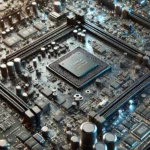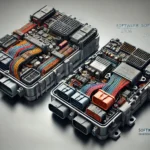The 49.2.5 A/C belt replacement is a crucial maintenance task to ensure your vehicle’s air conditioning system operates efficiently. Regularly replacing the A/C belt helps avoid potential breakdowns and maintains optimal cooling performance. Understanding the process and importance of the 49.2.5 A/C belt replacement can help you keep your vehicle in top condition.
Importance of Regular A/C Belt Maintenance
Regular maintenance of the A/C belt is vital to ensure the efficient operation of your vehicle’s air conditioning system. A well-maintained belt prevents issues such as poor cooling performance and potential system damage. Timely replacement helps avoid costly repairs and extends the life of the A/C system.
Indices That Point to the Need for a New 49.2.5 A/C Belt
Signs that the 49.2.5 A/C belt may need replacement include:
- Squealing noises from the engine area.
- Visible cracks or fraying on the belt surface.
- Decreased A/C performance or erratic operation.
Addressing these symptoms promptly can prevent further damage to the A/C system.
49.2.5 A/C Belt Replacement: Tools and Materials Required
For the 49.2.5 A/C belt replacement, you will need:
- Wrenches or socket set to remove bolts.
- To ensure the right tension, use a belt tension gauge.
- New A/C belt compatible with the 49.2.5 specification.
Possessing the appropriate instruments guarantees a seamless and effective replacement procedure.
How to Remove the Old 49.2.5 A/C Belt
To remove the old 49.2.5 A/C belt:
- Find the belt tensioner and use the proper tool to relieve the tension.
- Remove the old belt from the pulleys.
- Look for any indications of wear or damage on the pulleys.
This process prepares your vehicle for the installation of a new belt.
Installing the New 49.2.5 A/C Belt: Step-by-Step Guide
To install the new 49.2.5 A/C belt:
- Route the belt according to the vehicle’s belt diagram.
- Apply tension using the belt tensioner tool.
- Double-check alignment and ensure the belt sits properly on all pulleys.
Proper installation ensures the belt functions correctly and the A/C system operates smoothly.
Common Mistakes to Avoid During 49.2.5 A/C Belt Replacement
Common mistakes to avoid include:
- Over-tightening the belt, which can cause excessive wear.
- Incorrect routing of the belt, leading to improper function.
- Neglecting pulley inspection, which can affect the new belt’s performance.
Avoiding these mistakes ensures a successful and long-lasting belt replacement.
49.2.5 A/C Belt Replacement: Cost Factors and Budgeting
The cost of 49.2.5 A/C belt replacement can vary based on:
- Type of belt and brand chosen.
- labor expenses if a qualified mechanic completes the work.
- Additional parts or repairs needed if there are underlying issues.
Budgeting for these factors helps manage costs effectively and ensures you get quality parts and service.
Diagnosing Issues with the 49.2.5 A/C Belt System
To diagnose issues with the 49.2.5 A/C belt system:
- Check for unusual noises from the engine.
- Inspect belt condition for signs of wear or damage.
- Test A/C performance to ensure it meets expected cooling levels.
Proper diagnosis helps identify whether the belt or other components need attention.
The Role of the A/C Belt in Vehicle Performance
The A/C belt drives the air conditioning compressor, which is essential for cooling the interior of your vehicle. It also affects other systems linked to the belt, such as the alternator and power steering, influencing overall vehicle performance and comfort.
49.2.5 A/C Belt Replacement: Professional vs. DIY
Deciding between professional service and DIY replacement involves:
- Cost considerations for professional labor versus DIY savings.
- Skill level and tools required for a successful replacement.
- Time and convenience factors, including potential for errors in DIY.
Choosing the right option depends on your experience and comfort with automotive repairs.
How Often Should You Replace the 49.2.5 A/C Belt?
The 49.2.5 A/C belt should be replaced every 30,000 to 50,000 miles, or as recommended by the vehicle manufacturer. Regular inspections and prompt replacement when signs of wear are observed can help maintain optimal A/C performance.
49.2.5 A/C Belt Replacement: Warranty and Guarantees
When replacing the 49.2.5 A/C belt, check for:
- Warranty coverage on the new belt.
- Guarantees from the mechanic or service provider.
Benefits of Using High-Quality Replacement Belts
Using high-quality replacement belts ensures:
- Increased durability and longevity, reducing the need for frequent replacements.
- Better performance with fewer chances of slipping or stretching.
- Enhanced reliability in maintaining optimal A/C system function and vehicle efficiency.
Investing in high-quality belts can ultimately save on repair costs and improve overall vehicle performance.
Checking and Adjusting Belt Tension After Replacement
After replacing the 49.2.5 A/C belt, it’s crucial to:
- Check the tension using a belt tension gauge to ensure it’s within the manufacturer’s specifications.
- Adjust the tension if necessary to avoid slippage or excessive wear.
- Verify alignment to make sure the belt sits correctly on all pulleys.
Proper tension and alignment contribute to the belt’s optimal performance and longevity.
How to Extend the Life of Your 49.2.5 A/C Belt
To extend the life of your 49.2.5 A/C belt:
- Check frequently for indications of wear and tear.
- Maintain proper tension and alignment to prevent premature damage.
- Avoid overloading the A/C system by using it within normal operating conditions.
Regular maintenance and proper use can significantly prolong the belt’s lifespan.
The Impact of Proper A/C Belt Replacement on Vehicle Efficiency
Proper A/C belt replacement positively impacts vehicle efficiency by:
- Ensuring smooth operation of the A/C system, which helps maintain cabin comfort.
- Improving engine performance by reducing strain on the engine and other belt-driven components.
- Enhancing fuel efficiency as a well-functioning A/C system uses less power from the engine.
Timely replacement ensures the vehicle runs smoothly and efficiently.
Common Problems After 49.2.5 A/C Belt Replacement
Common issues post-replacement include:
- Belt slippage due to improper tension.
- Unusual noises from misalignment or defective belts.
- Reduced A/C performance if the installation was not done correctly.
Addressing these problems promptly can prevent further damage and ensure the belt performs well.
Final Thoughts on 49.2.5 A/C Belt Replacement
Replacing the 49.2.5 A/C belt is essential for maintaining your vehicle’s air conditioning system and overall performance. By following proper replacement procedures and investing in high-quality parts, you can ensure reliable operation and extend the life of your belt. Regular maintenance and timely replacements are key to avoiding more costly repairs down the line.
Frequently Asked Questions (FAQs)
What is a 49.2.5 A/C belt?
The 49.2.5 A/C belt is a specific type of belt used in certain vehicles to drive the air conditioning compressor and other accessories.
How often should I replace the 49.2.5 A/C belt?
It is generally recommended to replace the 49.2.5 A/C belt every 30,000 to 50,000 miles, but check your vehicle’s manual for specific guidelines.
What are the signs that my 49.2.5 A/C belt needs replacement?
Look for symptoms like squealing noises, visible cracks, fraying, or reduced A/C performance.
Can I replace the 49.2.5 A/C belt myself?
Yes, if you have the right tools and experience. Otherwise, it’s advisable to have a professional mechanic handle the replacement.
What tools are needed for a 49.2.5 A/C belt replacement?
You will need wrenches or a socket set, a belt tension gauge, and the correct replacement belt.
How do I check if the new 49.2.5 A/C belt is properly installed?
After installation, ensure the belt is properly aligned on the pulleys and adjust the tension according to the manufacturer’s specifications.
What should I do if the new A/C belt is making noise?
Check the belt tension and alignment. If the issue persists, there may be a problem with the belt itself or the pulleys, and further inspection may be needed.












